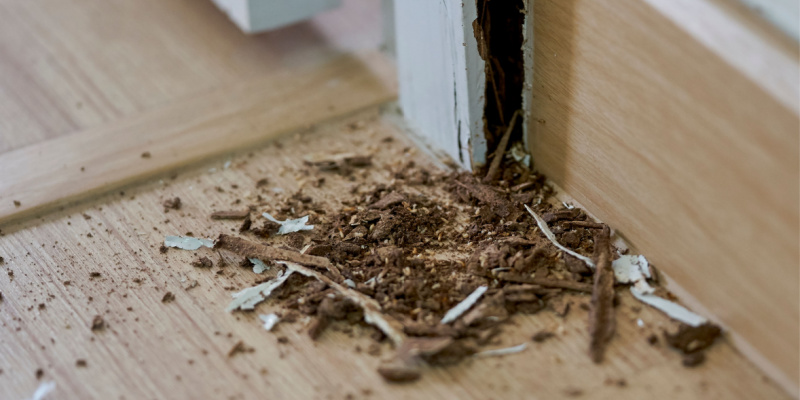Termites are often called the “silent destroyers” because of their ability to chew through wood, flooring, and even wallpaper undetected. Each year, termites cause significant damage to homes and structures, often going unnoticed until the damage is severe. Knowing the signs of a termite infestation is crucial for homeowners to prevent extensive damage and costly repairs.
Common Types of Termites
In the United States, the most prevalent types of termites are subterranean termites, drywood termites, and dampwood termites. Each type has unique behaviors and signs of infestation.
Signs of a Termite Infestation
- Mud Tubes: Subterranean termites build mud tubes, which are pencil-sized dirt tunnels, found near the home’s foundation. These tubes provide moisture while they travel between their colony and food source.
- Wood Damage: Termites consume wood from the inside out, leaving a thin veneer of timber or paint. When you tap on an area that has termite damage, it will sound hollow.
- Swarmers and Discarded Wings: Reproductive termites, called swarmers, take flight to start new colonies. Finding discarded wings near windows, doors, or other home access points can indicate the presence of termites.
- Frass: Drywood termites produce wood-colored droppings as they eat through infested wood. Finding a pile of what looks like tiny pellets is an indication of a drywood termite infestation.
- Bubbling or Uneven Paint: Subterranean termites can cause paint to bubble due to the moisture they bring with them or because they are hollowing out the area behind the paint.
Inspection Tips for Homeowners
Conducting a regular termite inspection can help you catch an infestation early. Here are some tips:
- Inspect the foundation of your home for signs of mud tubes.
- Check wooden structures closely for any signs of damage.
- Look for swarmers or discarded wings, especially during the spring.
- Listen for hollow sounds when you tap on wood surfaces.
- Watch for signs of sagging floors or walls, as these may indicate the presence of termites.
Professional Inspection and Identification
While homeowners can perform a basic inspection, termite identification and assessment are best left to professionals. Pest control experts can conduct a more thorough inspection using specialized equipment and their knowledge of termite behavior and signs. They can also distinguish between termite damage and other types of wood damage, such as rot or mold.
The Importance of Early Detection
Early detection of termites is critical to preventing extensive damage. Regular inspections, either by homeowners or professionals, can save thousands of dollars in repair costs. Termites work slowly, so catching an infestation in its early stages can minimize the harm.
Knowing if you have a termite infestation involves understanding the signs and behaviors of termites and regularly inspecting your home for these indicators. While homeowners can do preliminary checks, professional inspections are crucial for accurate identification and assessment. Early detection and intervention are key to effectively managing a termite infestation and protecting your home from these destructive pests. If you suspect a termite problem, it’s advisable to contact Perfection Pest Control immediately to assess and address the issue.
